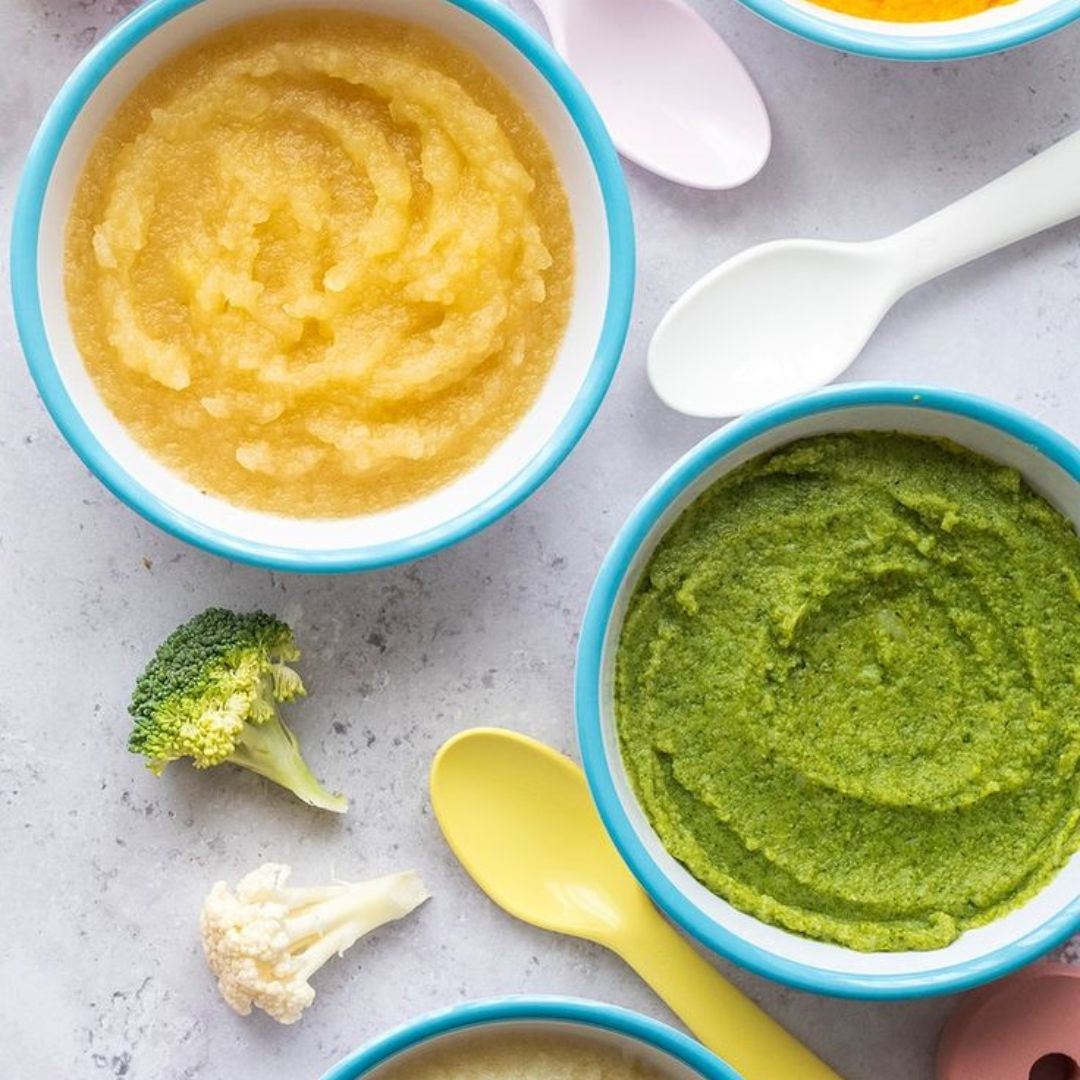Embarking on the journey of introducing solid foods to your baby is a significant milestone in their growth and development. As a parent, it's essential to navigate this exciting phase with knowledge and confidence. In this blog, we aim to offer you a comprehensive guide, that will provide you with valuable insights, tips, and practical advice to make the transition to solid foods, a smooth and enjoyable experience for both you and your little one.
Understanding the Signs of Readiness
Before diving into the world of solid foods, it's crucial to recognize the signs that indicate your baby is ready for this new adventure. Watch for cues such as increased interest in your meals, improved head control, and the ability to sit with support. Understanding these signs will help you introduce solids at the right time, ensuring a positive experience.
- Pay attention to your baby's interest in food during family meals. If they seem curious and eager, it might be the right time to start solids.
- Ensure that your baby can sit upright with support. This helps in swallowing and digesting solid foods more effectively.
- Babies are born with a natural reflex that pushes objects out of their mouths. When this reflex diminishes, it indicates readiness for solids.
Selecting the First Solid Foods
Choosing the right foods for your baby is crucial for their nutritional intake and palate development. Start with single-ingredient purees to identify any potential allergies and gradually progress to a variety of flavors and textures.
- Begin with simple purees like rice cereal, sweet potatoes, or applesauce. This helps identify any allergies and introduces one flavor at a time.
- Introduce new foods one at a time, waiting a few days between each. This allows you to monitor your baby's reaction to different ingredients.
- Ensure a mix of fruits, vegetables, and grains provides a balanced range of nutrients for your baby's growth.
The Art of Feeding Techniques
As your baby explores the world of solids, mastering feeding techniques is essential for a positive experience. From choosing the right utensils to understanding portion sizes, these tips will guide you through the art of feeding.
- Use soft-tipped spoons and shallow bowls for easy feeding. Gradually introduce baby-safe utensils as your baby becomes more adept at self-feeding.
- Pay attention to your baby's cues during meals. Allow them to set the pace, and be responsive to signs of fullness or interest in more food.
- Start with small, manageable portions and gradually increase as your baby shows readiness for more substantial meals.
- Pick unique baby feeding bibs to take care of the spills and droppings.
Encouraging Self-Feeding and Independence
As your baby grows, encouraging self-feeding fosters independence and a positive relationship with food. Learn effective strategies to promote self-feeding while maintaining a mess-free environment.
- Introduce age-appropriate finger foods that your baby can grasp and explore independently.
- Embrace the mess as your baby learns to feed themselves. Use bibs, high chair trays, and easy-to-clean surfaces to make mealtime enjoyable.
- Encourage self-feeding by praising your baby's efforts. This positive reinforcement fosters a sense of independence and confidence.
- Include your baby in family meals whenever possible. This not only promotes social interaction but also exposes them to a variety of foods.
- Experiment with a diverse range of flavors and textures while preparing a baby food chart to expand your baby's palate. Make mealtime an exploration of different tastes.
- Establish a consistent mealtime routine to create a sense of structure. Consistency helps your baby associate mealtime with nourishment and comfort.
Understanding Baby-Led Weaning (BLW)
Baby-Led Weaning (BLW) is an alternative approach to introducing solids that empowers babies to take control of their feeding experience. Instead of spoon-feeding purees, BLW encourages self-feeding, allowing babies to explore various textures and flavors independently.
- BLW promotes the development of fine motor skills as babies grasp, manipulate, and self-feed with age-appropriate finger foods.
- BLW involves sharing family meals, fostering a sense of inclusion, and allowing babies to observe and mimic healthy eating habits.
- Babies experience a variety of textures early on, enhancing their palate and making the transition to table foods smoother.
Exploring Traditional Feeding
Traditional feeding involves the introduction of purees and spoon-feeding as the primary method for transitioning babies to solid foods. This method provides caregivers with more control over what and how much the baby eats.
- Traditional feeding allows caregivers to control the pace and variety of foods introduced to the baby, ensuring a gradual transition to solids.
- Caregivers actively participate in feeding, providing a hands-on approach to monitor the baby's intake and respond to hunger cues. A 6 month old baby food chart would include fruit and veggie purees and lentil soups.
- Purees enable caregivers to create nutrient-dense blends, ensuring babies receive essential vitamins and minerals from a variety of foods.
Pros and Cons of BLW
Baby-Led Weaning has gained popularity for its focus on independence and exploration. However, like any approach, it comes with its own set of advantages and challenges.
Pros of BLW:
- Development of self-feeding skills.
- Exposure to varied textures and flavors.
- Inclusion in family meals promotes social learning.
Cons of BLW:
- The risk of choking, although rare, is a concern.
- Potential mess during self-feeding.
- Some babies may take time to adapt to self-feeding.
Pros and Cons of Traditional Feeding
Traditional feeding methods have been a conventional choice for introducing solids, providing caregivers with a structured and controlled approach.
Pros of Traditional Feeding:
- Controlled introduction of foods.
- Easier monitoring of nutrient intake.
- Reduced risk of choking during early stages.
Cons of Traditional Feeding:
- Potential resistance from babies to spoon-feeding.
- Less emphasis on self-feeding skills.
- Limited exposure to varied textures in the early stages.
Making the Decision: What Works for You?
Choosing between BLW and Traditional Feeding is a personal decision that depends on your baby's temperament, your comfort level, and the dynamics of your family.
- Evaluate your baby's developmental readiness for self-feeding and their interest in exploring textures.
- Consider your comfort level with mess, supervision during meals, and the level of control you want over your baby's food intake.
- Think about how each approach aligns with your family's lifestyle and mealtime habits.
Embarking on the journey of introducing solids to your baby is a significant milestone in their development. Whether you choose Baby-Led Weaning (BLW) or the traditional feeding approach, the goal is to foster healthy eating habits. At A Toddler Thing, we recognize the importance of this stage and offer assistance in growing with your baby! In our future blog, we will be offering you an insight into what foods to include in an infant diet plan.
Whether you are looking for reusable diapers or you want swaddles to offer a peaceful night sleep to your little one, we bring it all!



